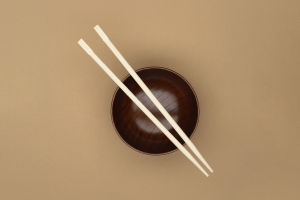Wearing glasses has become much more than a necessity for those with vision issues; it has evolved into a key element of personal style.
Whether Lykkers need them for nearsightedness, farsightedness, or just for screen time, glasses can be both practical and fashionable.
But how do you pick the right pair, and what should you know about nearsightedness? Let's dive into this lifestyle guide to help you make informed and stylish choices.
How to Determine If You're Nearsighted
Nearsightedness, or myopia, is one of the most common vision problems worldwide. If you're nearsighted, distant objects appear blurry while close-up items remain clear. Many Lykkers may not even realize they're nearsighted until they notice difficulty seeing road signs, distant objects in classrooms, or when driving at night.
Here are some common signs of nearsightedness:
Blurry vision when looking at distant objects
Squinting to see more clearly
Eye strain or discomfort after looking at faraway things for extended periods
Headaches caused by strained vision
If you experience any of these symptoms, it’s important to schedule an eye exam. Eye care professionals use a range of tests to determine the extent of your nearsightedness, typically measuring how well you can read distant letters on a chart.
Picking the Right Glasses
When it comes to choosing the right glasses, there are a few key factors to consider that can ensure your glasses are both functional and stylish. Here’s a quick guide:
1. Face Shape
Your face shape plays a crucial role in selecting the best frames. For example:
Round faces suit square or rectangular frames to provide contrast and structure.
Square faces look great with round or oval frames to soften sharp angles.
Heart-shaped faces pair well with cat-eye or wide-bottom frames to balance the forehead and chin.
Oval faces are versatile and can pull off almost any frame style.
2. Frame Material
Glasses come in various materials, each offering different benefits:
Plastic frames are lightweight and come in various colors but may be less durable.
Metal frames provide a sleek look and tend to be more durable, though slightly heavier.
Titanium frames are both lightweight and highly durable, perfect for everyday wearers.
3. Lens Type
Lenses come with their own options depending on your needs:
Single-vision lenses correct either nearsightedness or farsightedness.
Progressive lenses allow for seamless vision correction across various distances.
Blue light lenses are ideal for Lykkers spending long hours on digital screens.
Pricing Your Glasses
The price of glasses can vary greatly based on frame material, brand, and lens type. Basic prescription glasses can start as low as USD 50, while designer frames or glasses with specialized lenses can range up to USD 500 or more.
For those on a budget, many online retailers now offer affordable options, allowing you to try on frames virtually before purchasing. However, always ensure you know your exact prescription before ordering online.
Fun Facts About Glasses
1. Ancient Beginnings: The first known use of magnifying glasses dates back to the 13th century in Italy, making modern eyewear centuries in the making.
2. More Than Vision: Over 60% of adults wear glasses, not just for vision correction but also as a fashion statement.
3. Iconic Styles: Some of the most famous individuals in history, from Mahatma Gandhi to John Lennon, made glasses a part of their signature style.
Taking Care of Your Glasses
It’s essential to maintain your glasses to ensure they last longer and continue providing clear vision. Here are some tips:
Clean regularly with a microfiber cloth to avoid scratches.
Store them in a case when not in use to prevent damage.
Avoid placing them lens-down on surfaces to protect against scuffs.
Final Thoughts
Choosing the right glasses is about blending style, comfort, and practicality. By considering your face shape, frame material, and lens type, Lykkers can find the perfect pair to suit both their vision needs and lifestyle. Don’t forget to look out for signs of nearsightedness and visit an eye care professional for an accurate prescription. With the right care, your glasses can become an essential part of your day-to-day life while keeping you looking sharp and seeing clearly.
The Best Glasses For You (it's not just about face shape)
video by Tim Dessaint


